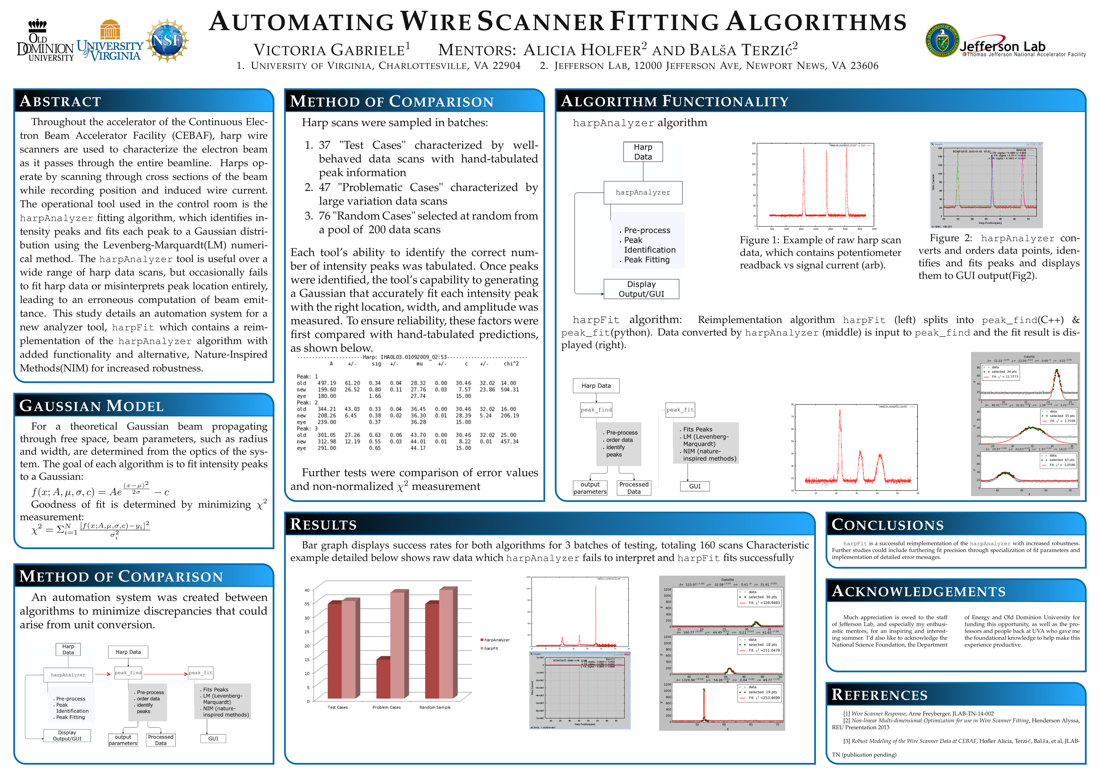Undergraduate Research at Jefferson Lab
Automating Harp Wire Scanner Fit Algorithms
Student: Victoria Gabriele
School: University of Virginia
Mentored By: Alicia Hofler and Balša Terzić
Harp wire scanners, located across the Continuous Electron Beam Accelerator Facility (CEBAF) of Jefferson Lab, are used to characterize the electron beam as it passes through the entire beamline. For a Gaussian beam propagating through free space, beam parameters, such as radius and width, are determined from the optics of the system. Harps operate by scanning through cross sections of the beam while recording position and induced wire current. The harpAnalyzer fitting algorithm identifies intensity peaks from harp current measurements and fits each peak to a Gaussian distribution using the Levenberg-Marquardt (LM) numerical method. The harpAnalyzer tool is useful over a wide range of harp data scans, but occasionally fails to fit harp data or misinterprets peak location entirely, leading to an incomplete understanding of beam emittance. This study details an automation system for a new analyzer tool, harpFit which contains a reimplementation of the harpAnalyzer algorithm with added functionality and alternative, Nature-Inspired Methods (NIM) for increased robustness. The criteria for comparison of the tools was the ability to identify the correct number of intensity peaks. Once peaks have been identified, the tools must generate a Gaussian that accurately fits each intensity peak location, width, and amplitude against hand-tabulated predictions. A final test was a comparison of error and non-normalized chi-square measurement. Testing among 200 scans chosen in both systematic and at random batches showed that harpFit produced output to higher precision, even for problematic data sets. For peak data that had an approximately constant noise floor, reasonably spaced peaks, and peaks with ample data points, the new tool and old tool preformed with the same level of accuracy. In sets that held more noise, sharper peaks and shorter distances between peaks harpFit still produced reasonable output while harpAnalyzer did not. In those cases, the harpAnalyzer algorithm would either crash or fit noise instead of a peak. Across each metric, harpFit used in conjunction with the new peak finding routine and automation system has higher reliability and trouble-shooting abilities than the old tool. Harp data provides a quantitative measure of beam merit as the beam travels, which is imperative for the design and execution of accelerator experiments.

Citation and linking information
For questions about this page, please contact Education Web Administrator.
